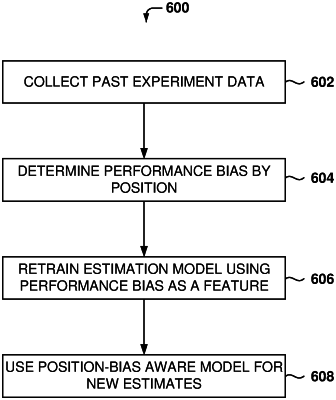| CPC G06Q 30/0243 (2013.01) [G06Q 30/0277 (2013.01)] | 20 Claims |

|
1. A computer-implemented method comprising:
collecting a set of items from a database;
causing a first presentation of a first plurality of the set of items on a display feed of a website, the first plurality of items including a first item;
applying a transformation to one or more of the items including the first item, wherein applying the transformation to an item includes repositioning the respective item on the display feed;
creating a first training set comprising accessed experiment results for A/B testing of an update to a first model, the experiment results comprising information regarding user engagement with the first plurality of the set of items when the first plurality of the set of items is presented to users, each item being presented within an ordered list of results on the display feed of the website, wherein the first item has a first position in the display feed that changes during A/B testing;
using the first training set, calculating, based on the experiment results, a position bias for positions within the ordered list of results;
creating a second training set comprising the calculated position biases;
training a machine-learning program using the second training set to obtain a second model having positionally debiased outputs;
detecting a second plurality of items to be ranked for presentation to a first user, the second plurality of items comprising the first item;
calculating, using the second model, a relevance score for each of the second plurality of items;
ranking the second plurality of items based on the respective relevance score; and
causing a second presentation of the ranked second plurality of items on the display feed of the website, wherein a second position of the first item in the second presentation changes from the first position in the first presentation based in part on the positionally debiased outputs of the second model.
|